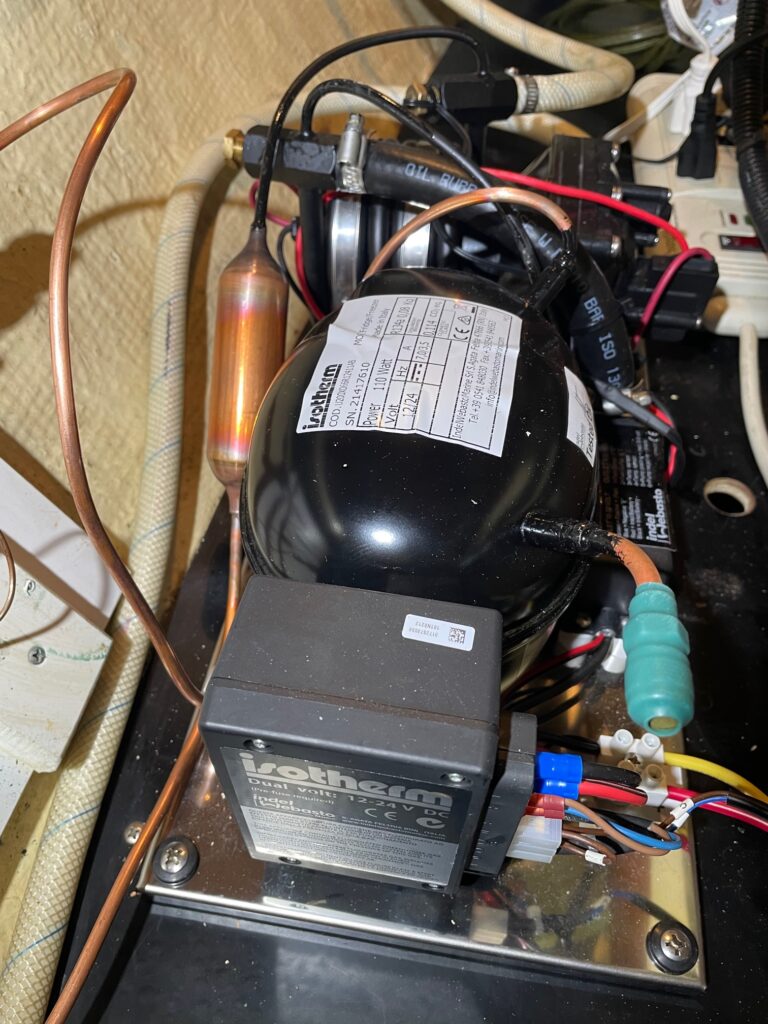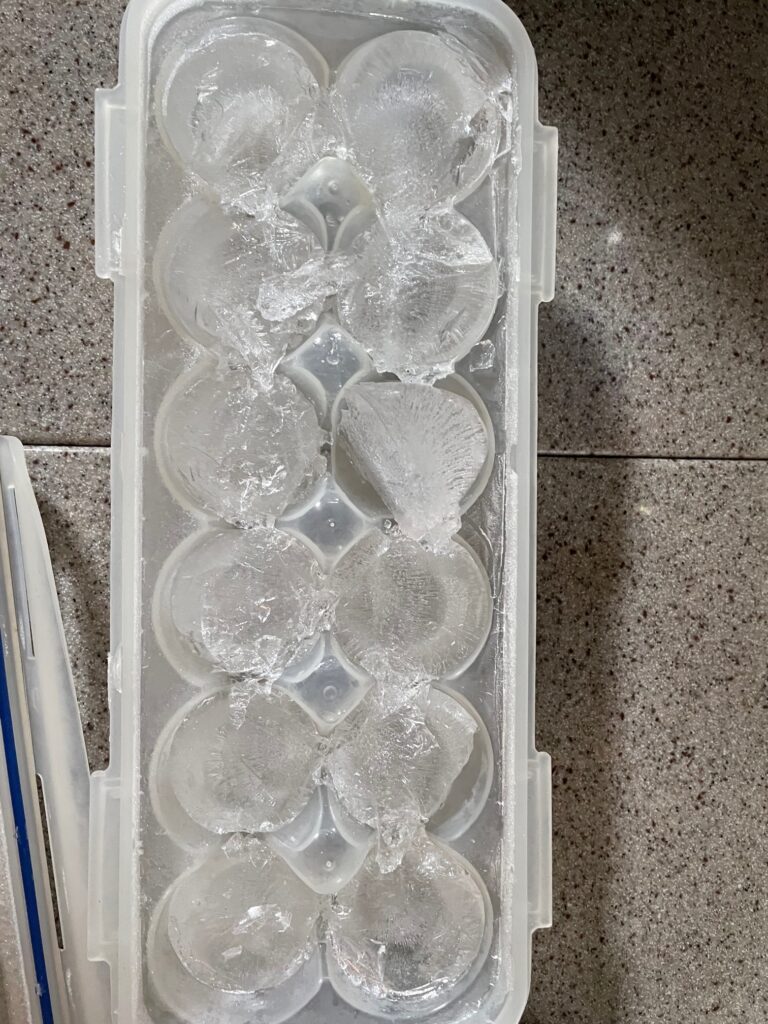The refrigeration on Apropos has been inoperable for a long time. During our South Pacific trip, we shut the freezer down after departing Mexico for French Polynesia–it was consuming too much power for our solar to keep up with and we knew there would be no docks to plug into for the rest of the trip. We replaced it with a portable Dometic refrigeration box that found a place on the cabin floor in the v-berth. It eventually got moved closer to the batteries on the aft port-side cabin floor. It worked well but took up valuable floor space (24″ x 16″). After returning to Seattle, it was a low-priority project until now.
The Old System
The old system was very complex. It was a Glacier Bay 12VDC water-cooled, cold-plate system. It was installed in 2004 and was run continuously for about 10 years, but Glacier Bay went out of business so parts were no longer available. It had 3 zones–a refrigeration box, a freezer box, and an air conditioning zone (we never really used the air conditioning zone except to try it out a few times). There was a solenoid valve for each zone and only one zone could be active at a time. There were many feet of refrigerant carrying copper tubing that ran from the compressor to each of the 3 zones. It had 2 remote display/control panels for setting and reading temperatures in the freezer and refrigerator boxes. We discovered soon after arriving in Mexico that the refrigeration system was running too often, most likely due to the lack of good insulation of the boxes. While in Mexico, I bought a sheet of 1″ foam closed-cell insulation from a hardware store and lined both boxes, but it was a sloppy job trying to fit the insulation around the cold plates. Soon after, we gave up on it and began using the Dometic portable refrigerator.
The New System
I chose an Isotherm Magnum 2505. It’s a 12VDC sea-water cooled system with an O-evaporator and built-in pump. I decided to keep it simpler by only having a refrigerator box, and convert the old freezer box to dry storage. The freezer box was very small and top-loading, and being tucked into a corner of the countertop, it was hard to access especially the lower half. For the amount of food it held, it wasn’t worth the energy it took to keep things frozen. The O-evaporator is like having a mini freezer within the refrigerator–with just enough volume to freeze a few items. The system comes fully charged with quick-connect self-sealing valves for easy installation–no refrigerant technicians needed. The compressor is industry standard Danfoss/SeCOP and is designed for volumes up to 7 cubic feet.
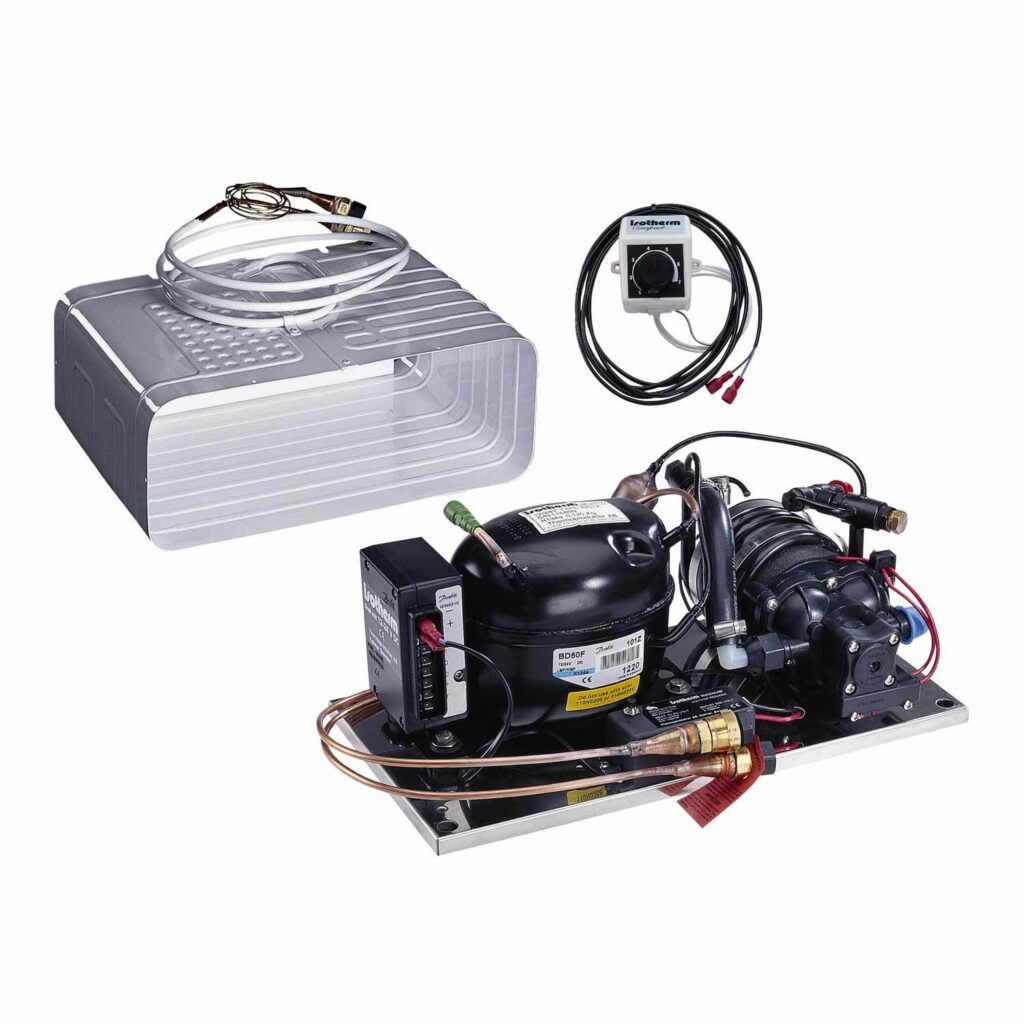
Installation
First I had to remove the old system. The holding plates came out easily and I was surprised how little refrigerant came out when I cut the copper tubing on the holding plates. I had always suspected a leak in the system so either it leaked out or settled in the tank or holding plates. The compressor unit was mounted under the pilot berth in a “dry” bay, but signs of moisture and corrosion were obvious.
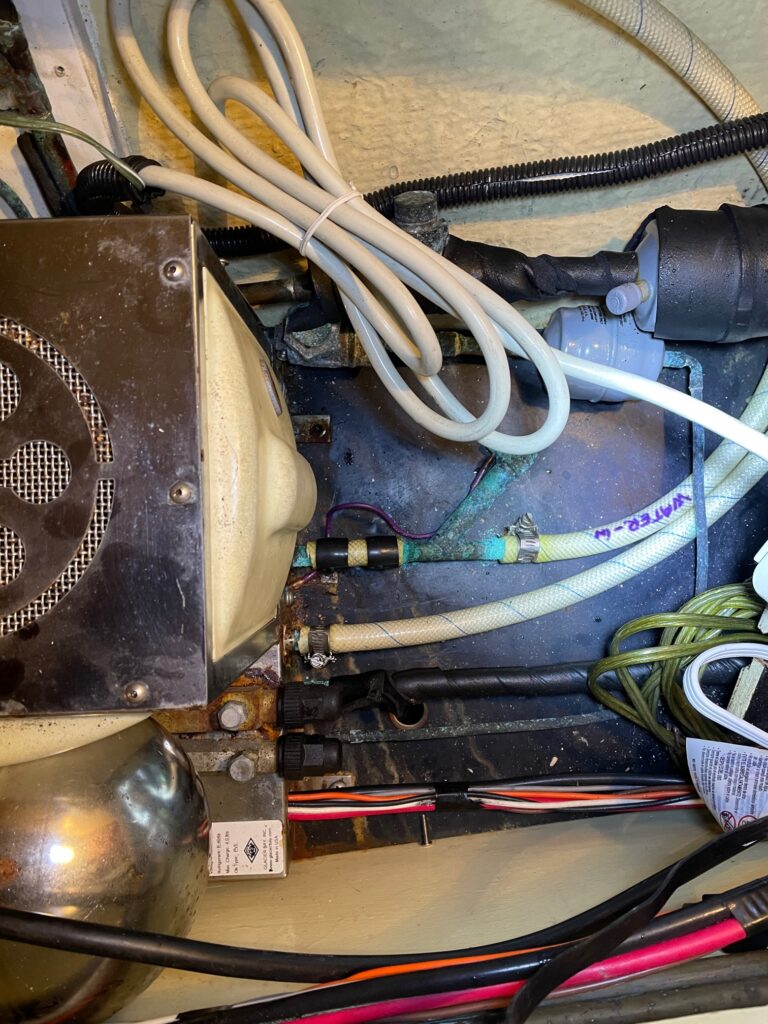
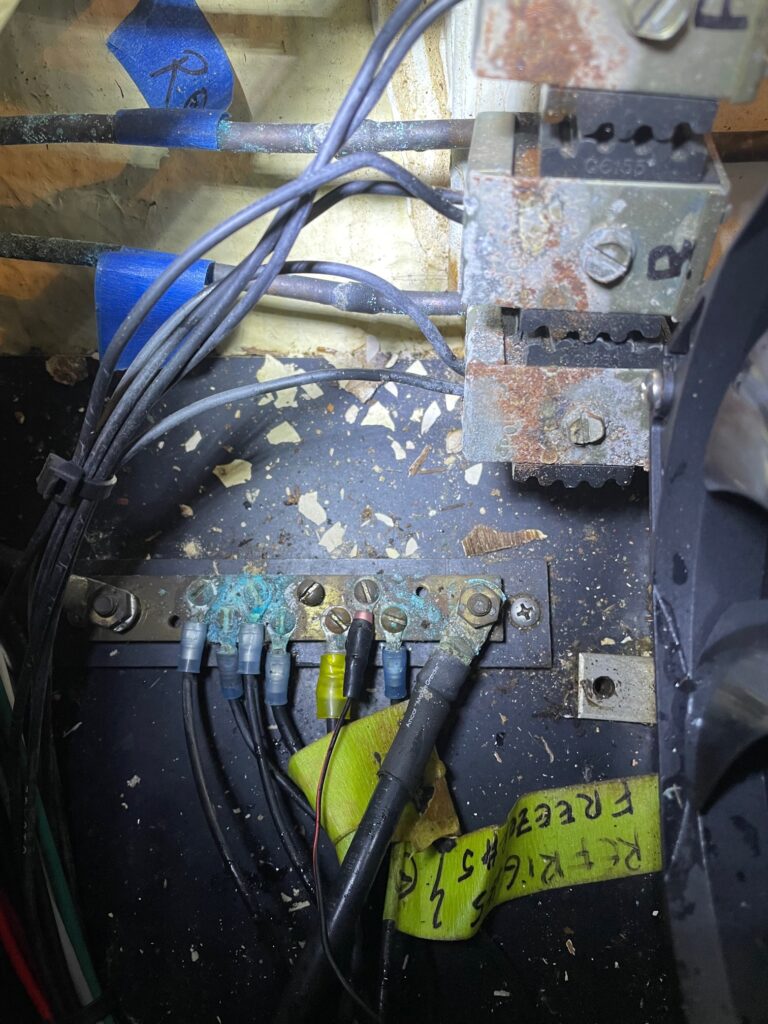
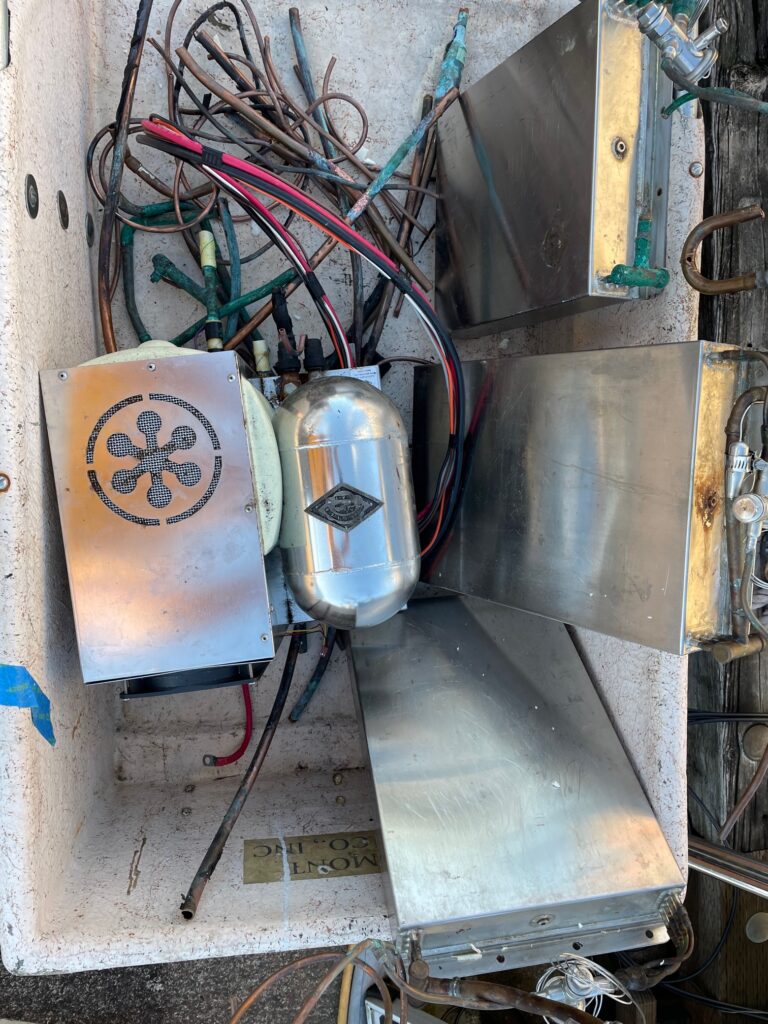
After removing all the old equipment and cleaning, the next step was to insulate the box. Without insulation, the box measured about 7 cubic feet. I used 2″ thick closed cell insulation (R factor of 12.5) for the bottom and 2 sides (hull side and engine side). For the large sides (fore and aft) I intended to use 2″ but after seeing how much smaller it made the box, I compromised with 1″. Since the box is top loading, we stack lock-n-lock boxes to organize the food (one for meat & cheeses, one for soda cans, one for condiments, etc), and they fit perfectly with the 1″ insulation on the sides (the box would have been too narrow if I had used the 2″). After fitting the insulation, I caulked all the seams to fill in any air gaps. Next I covered the insulation with 20 gauge stainless steel to protect it and make it easy to clean the inside of the box. For this, I made a cardboard template of all the sides and took them to Ballard Sheetmetal for cutting. It fit perfectly so I used adhesive to hold them in place, then caulked all the seams with grey silicone caulking. The final refrigerator box measurements came to 5.9 cubic feet, so I lost about 1.1 cubic feet from the insulation, but this should be a big improvement since the system won’t be cycling on as much.
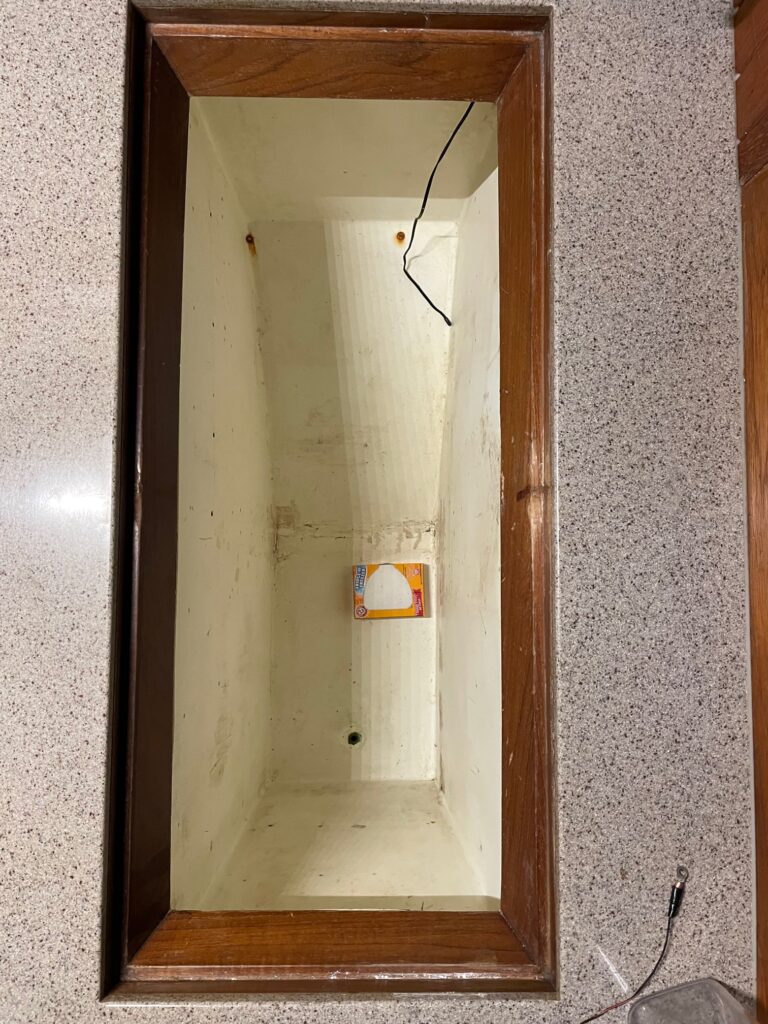
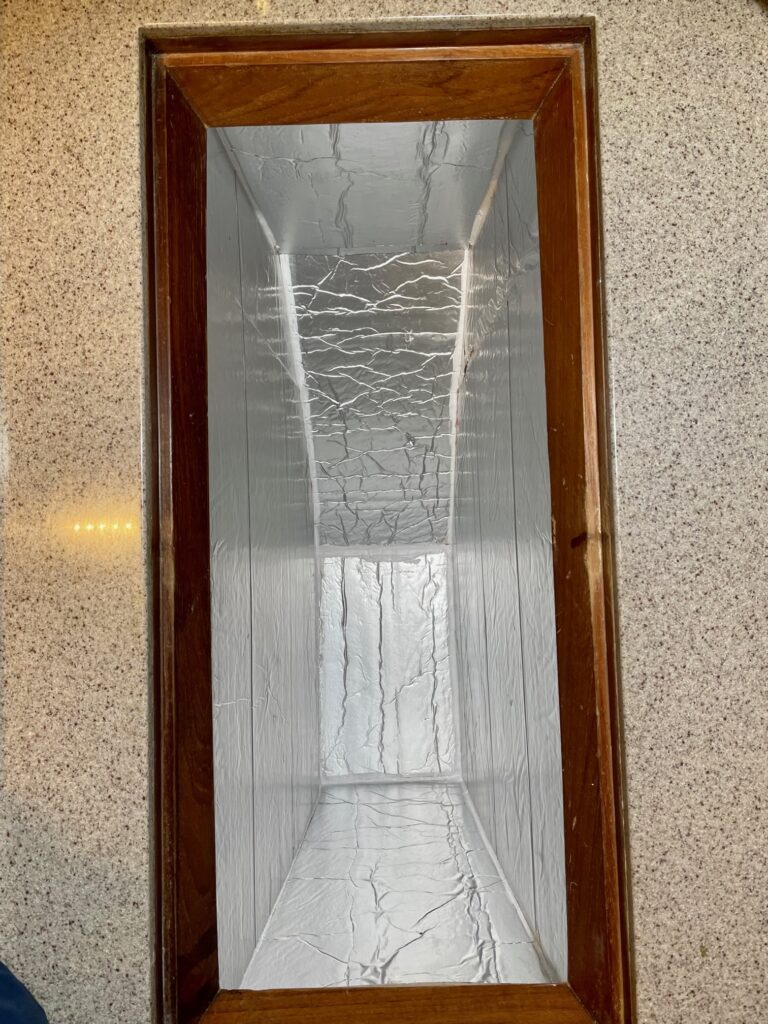
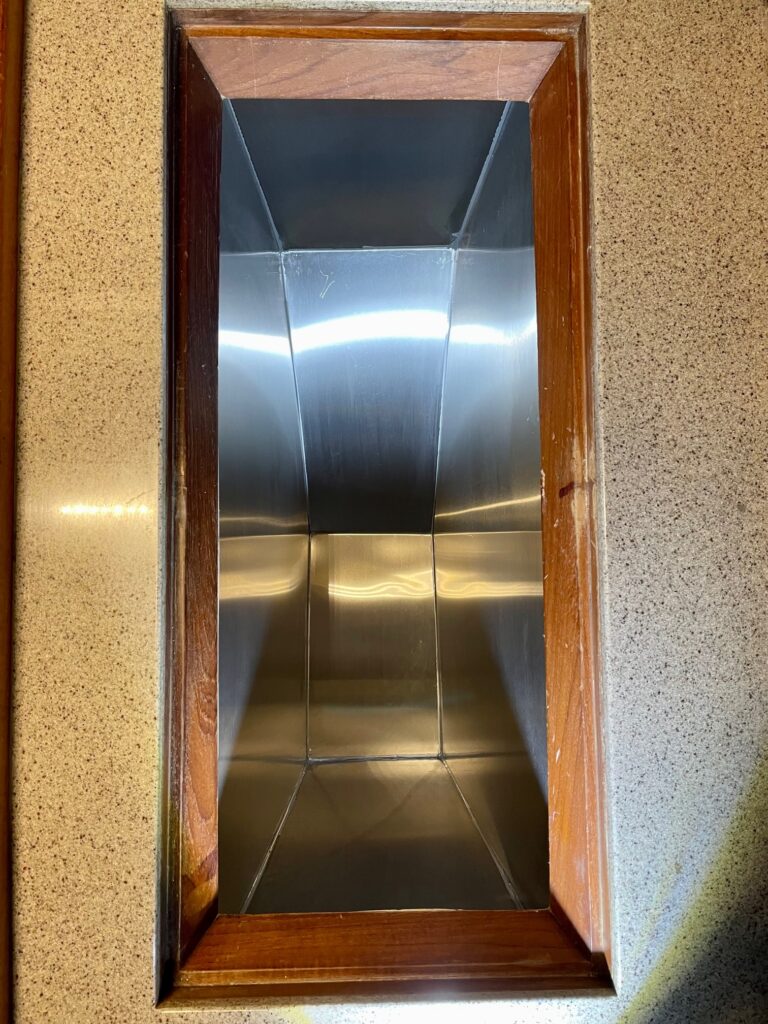
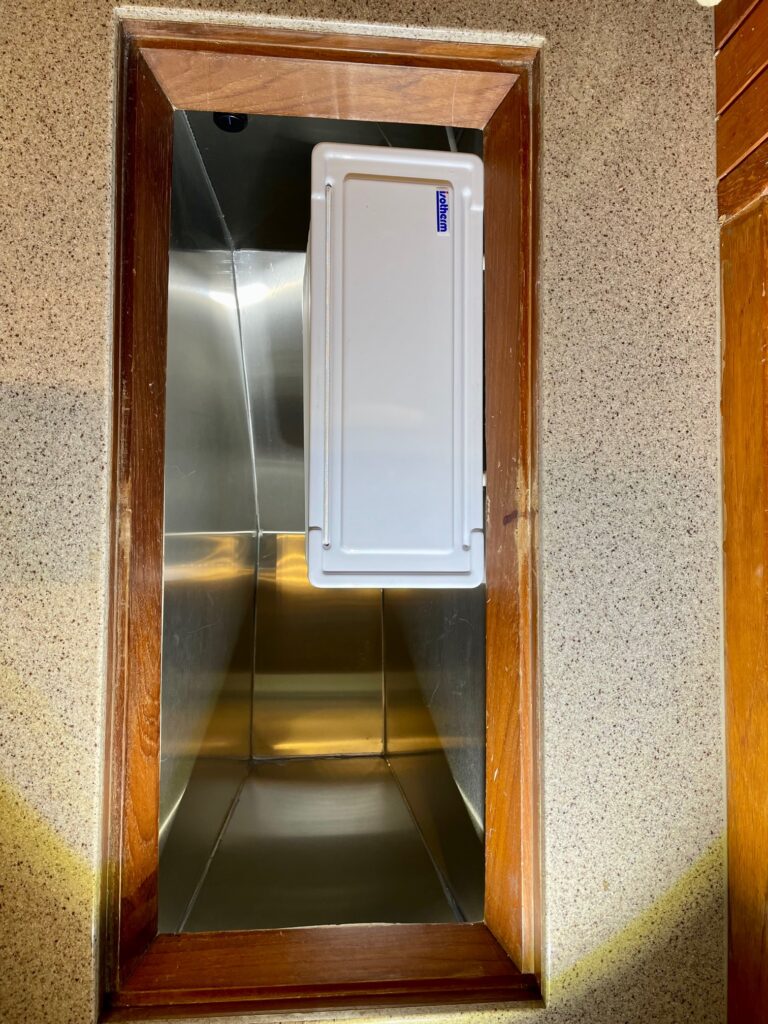
Installing the compressor was easy. I ran the refrigerant lines from the evaporator box and connected them with quick-connect couplers, then ran the input and output seawater hoses for cooling, and connected a fused 12V supply. These were already in place from the old system. The old system required an external water pump, so I bypassed the old pump to feed seawater directly from an existing thru-hull. I used the old temperature probe and digital display from the old system so I can monitor the temperature inside the box. Everything worked when I turned it on and the O-evaporator box easily freezes water so we’ll have ice cubes now!
